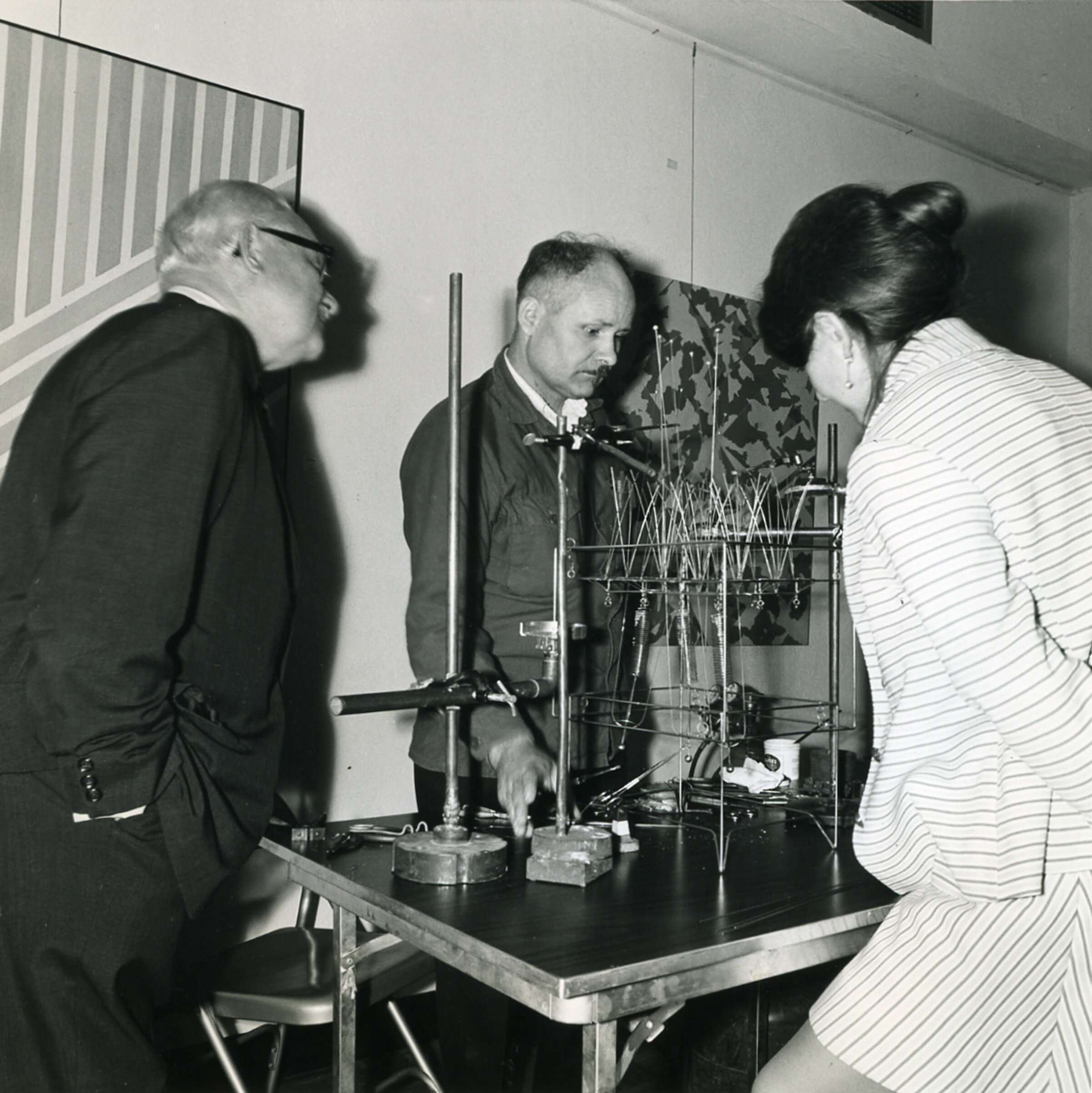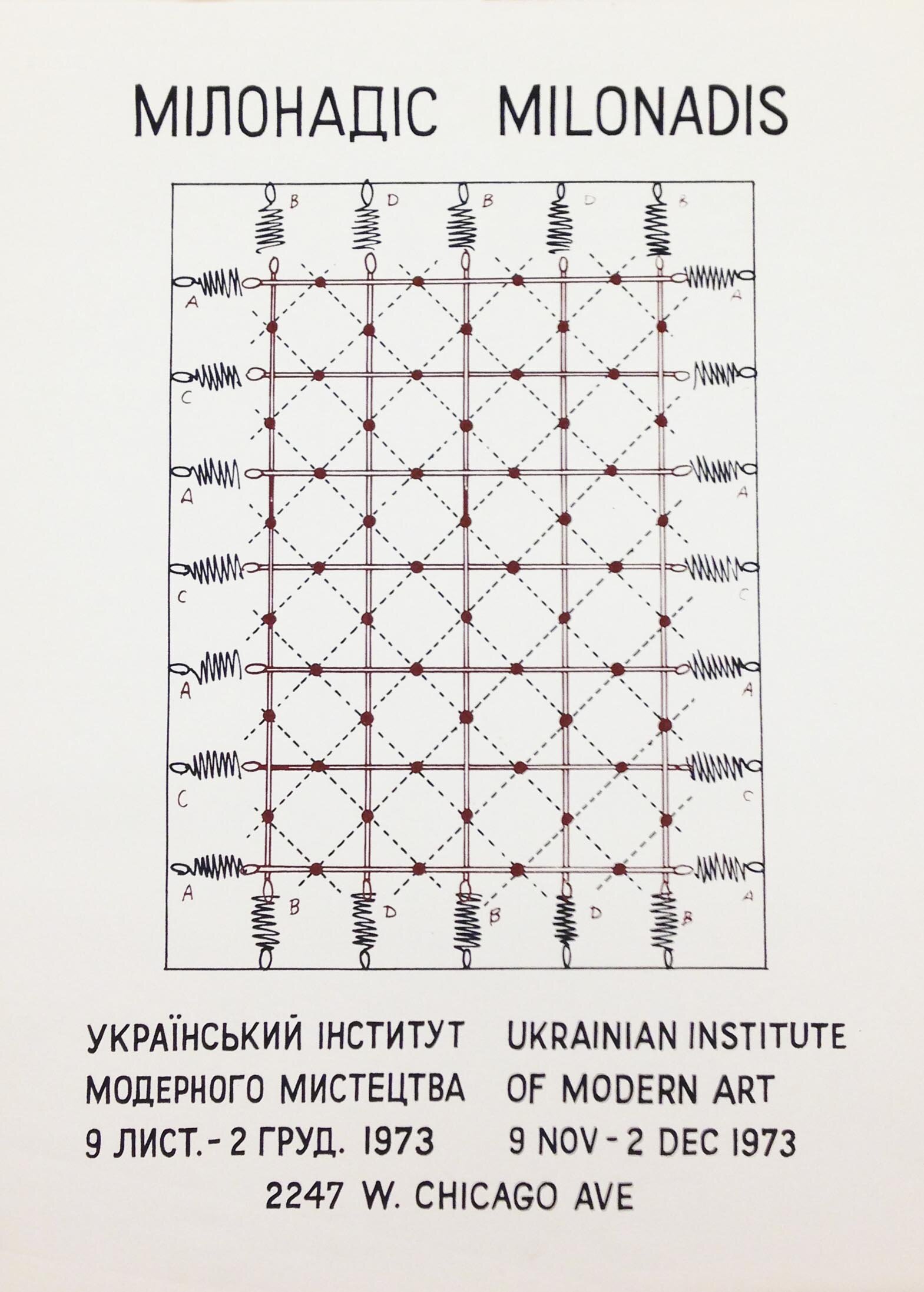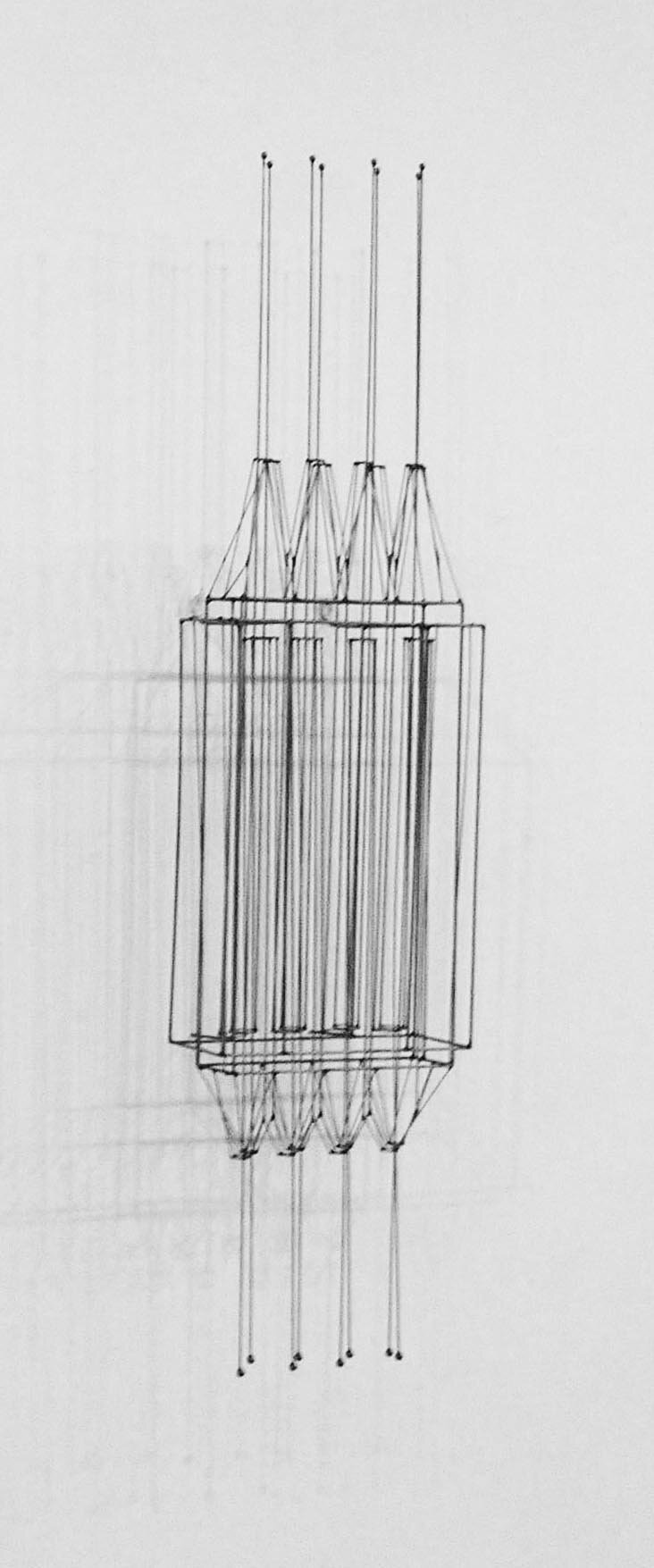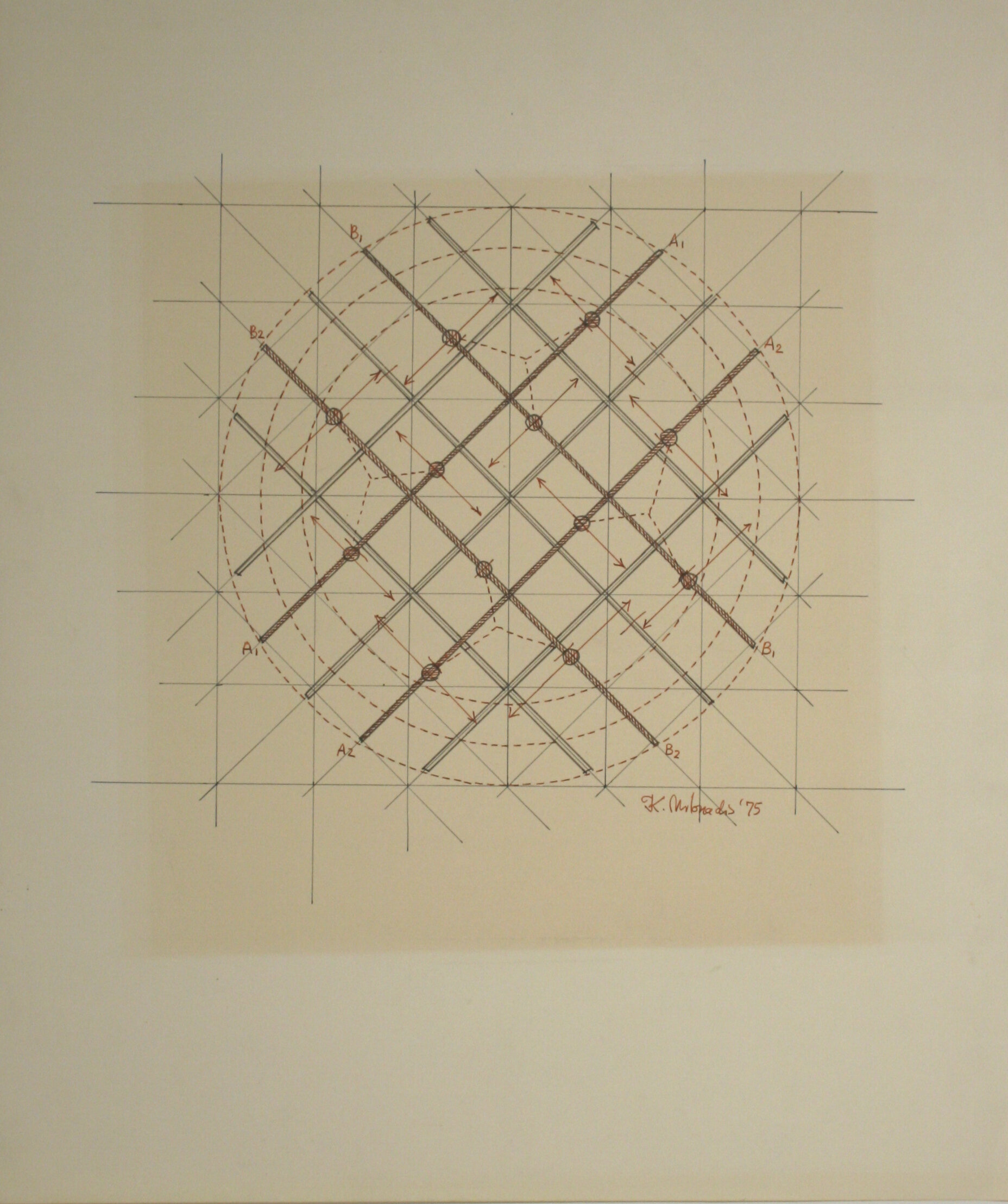Konstantin Milonadis
Untitled, nd
Stainless steel wire
28” x 13 1/2” x 10 1/2”
Gift of Mr. Wasyl Kacurovsky
Milonadis’ kinetic sculpture Untitled (nd) is an example of the artist’s interest in exploring rhythm, momentum and sound. The object shimmers as it moves within an intricately detailed armature of thin wire, bent into a decorative organic pattern. Seemingly static from afar, the piece arouses full sensory experience only after moving its center core, a separate square unit cleverly suspended by wire rods. As it moves, the core emits quiet vibrations, brief in duration, yet entirely controlled by the viewer's touch.
About Milonadis
UIMA co-founder Konstantin Milonadis was an accomplished sculptor and professor. He received his MFA from Tulane University in 1959, and taught sculpture at Valparaiso University, Mundelein College, and Newcomb College at Tulane University. He was a distinguished professor and sculptor-in-residence at Notre Dame University until 1974 and exhibited widely throughout the United States.
Acutely aware of the limitations available to Ukrainian artists in the mid 20th century, Milonadis, along with artist colleague and UIMA co-founder Michajlo Urbhan created Vasah in Chicago in 1965 -- a group of Ukrainian Americans artists committed to modern art. In the introduction to Vasah’s 1966 exhibition pamphlet, Milonadis noted that the U.S. government's concern for ideological over artistic criteria inhibited any interest in Ukrainian artists in the Western world, as well as the lack of resources within immigrant communities for staging art exhibits produced a restricted understanding of the art shown. Vasah’s aims and regular exhibits at Lions Social Club Gallery led to the founding of UIMA in 1971.
Milonadis, recognizing that Ukrainian art is neither uniform nor it’s immigrant artists spokespersons for all things Ukrainian, clarified Vasah’s purpose and its anti-traditionalist stance. He was also keenly aware of the importance Vasah carried to develop and perpetuate modern art for their compatriot artists in Ukraine, in light of the oppressive political circumstances in which they lived and worked. In the same 1966 Vasah exhibition introduction, he stated, and I quote,
“Another group consists of artists in Ukraine who, to the extent that it is possible, reject official standards in search of contemporary art forms and modes of expression. These modes of searching do not come easily, for, bypassing ideological factors, from the technical side, these artists are denied access to materials and information about the unfolding of Ukrainian modernism at the beginning of the twentieth century, and therefore, in their searching they must not only recreate everything all over again, but they must also fight the false assertions that the manifestation and essence of modernism are foreign to the soul and nature of the Ukrainian nation.
Milonadis continued stating, “All the more interesting, with regards to contemporary artistic achievements, is this latest group–artists [meaning Vasah] whose world-view was shaped in emigration, in the higher institutions of western learning, in an atmosphere of free search and experimentation. Their activity is a part of the normal evolution of the next phase of contemporary Ukrainian art, as it steps across the ocean.
Although small groups of these artists are scattered in many countries where Ukrainians have settled, doubtless the most significant concentration of young emigre artists is in North America, both in terms of number and in terms of professional activity in American artistic life. These artists are aware of the fact that they do not have a mandate to represent Ukrainian art, and so hold that it is more accurate to call themselves Ukrainian-American artists."






